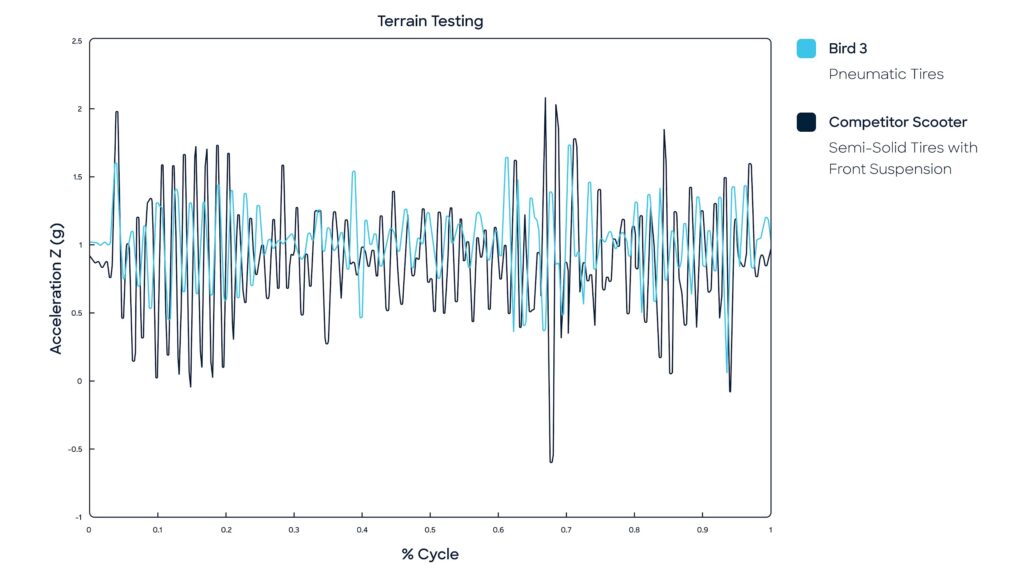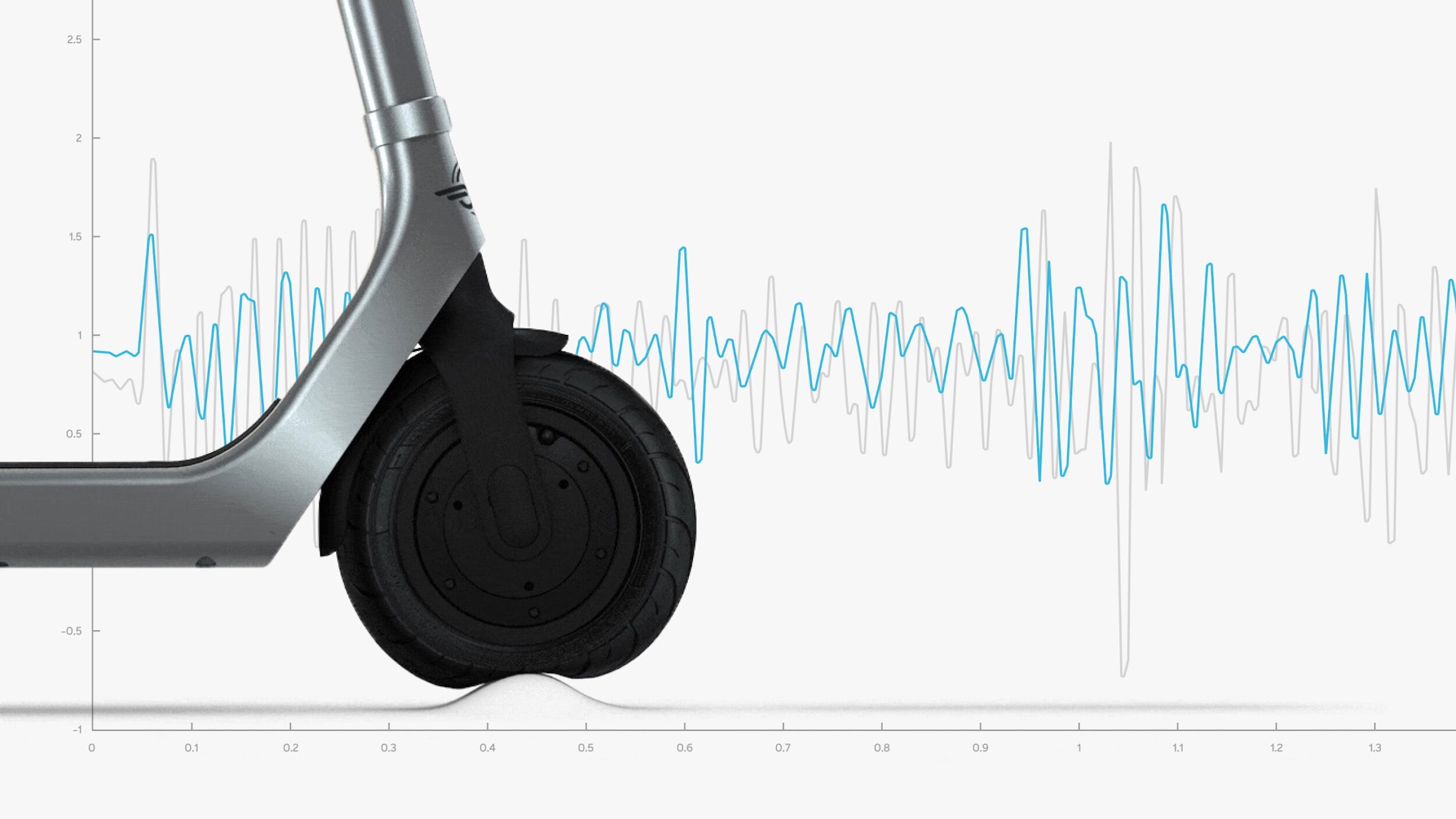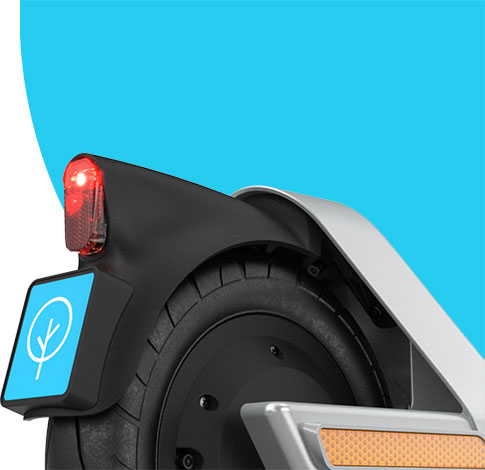The Breakdown:
- Tires are a critical component of e-scooter safety and stability
- Most shared scooters use either solid/semi-solid tires with shocks or pneumatic tires
- Recent testing demonstrates that pneumatic tires perform better across a wider variety of street surfaces and temperatures than solid tires with shocks, reducing vibrations by 33%
Shocks or no shocks? The answer may surprise you.
Most shared scooters rely on one of two tire models: solid/semi-solid tires with “shocks” or pneumatic tires without them. As a reminder, pneumatic tires consist of a central wheel hub surrounded by a rubber, typically air-filled exterior. Given that a scooter’s tires are one of the most critical components impacting traction and stability, it’s important for shared micromobility providers to invest in designs that improve vehicle safety.
At Bird, we intentionally worked with a tire manufacturer to develop a unique, automotive-grade scooter tire specifically designed for the rigors of the shared micromobility industry. That means our in-house designed and engineered vehicles are equipped with specially-designed 6 ply tubeless pneumatic tires that contain a special sealant to prevent flats.
We did this for two reasons:
- First, pneumatic tires tend to offer better shock absorption over a wider variety of common street surfaces including gravel and cobblestone
- Second, while solid tires become rigid with dropping temperatures, decreasing their traction when it’s needed most, the air in pneumatic tires condenses in colder temperatures making them softer and more compliant
Recent testing at our state of the art R&D facility in Southern California has borne out these initial assumptions, demonstrating that pneumatic tires perform better than solid tires with shocks across a wide variety of street surfaces.
How We Tested Pneumatic Tires vs. Solid Tires With Shocks
To perform the evaluations, our engineers compared a Bird Three scooter equipped with our custom pneumatic tires and a mass-produced scooter model used by many operators worldwide with semi-solid tires and shocks.
Both vehicles were outfitted with testing instruments on the handlebars to detect the vertical acceleration that would be experienced by riders as jolts and vibrations. We then ran each vehicle multiple times down test tracks located in our SoCal test facility made up of gravel, cobblestone and a wide variety of other simulated street surfaces that riders encounter across the globe.
In each test, Bird Three’s unique tubeless tire design performed better than the solid tire with shocks, experiencing on average 33% less vertical acceleration than the other commonly used model.

“This reduction in vibrations is significant because it means 33% more stability and control for riders when experiencing everyday bumps and uneven road conditions” said Scott Rushforth, Chief Vehicle Officer at Bird. “Pneumatics are demonstrably better at damping vibration and low-frequency bumps than solid or semi-solid tires with suspension, and this most recent testing clearly validates that.”
In addition to the safety benefits that come with fewer vibrations and better handling and stability on bumpy streets, Bird’s pneumatic tires also have a hidden environmental benefit. By limiting the amount of shaking our scooters experience, we cut down on premature wear and tear of vehicle components, increasing sustainability. Pneumatic tires can also easily be changed when damaged, salvaging the wheel hub, while solids are typically serviced by replacing the entire wheel or motor assembly.
Given that manufacturing represents the highest amount of a scooter’s lifetime CO2 output, that additional protection spread across a fleet of tens of thousands of vehicles quickly adds up.
Learn More
To learn more about the safety and sustainability of our vehicles, including how the industry’s longest footboard helps make our scooters even more stable and accessible for all riders, subscribe to the Bird Cities Blog.

